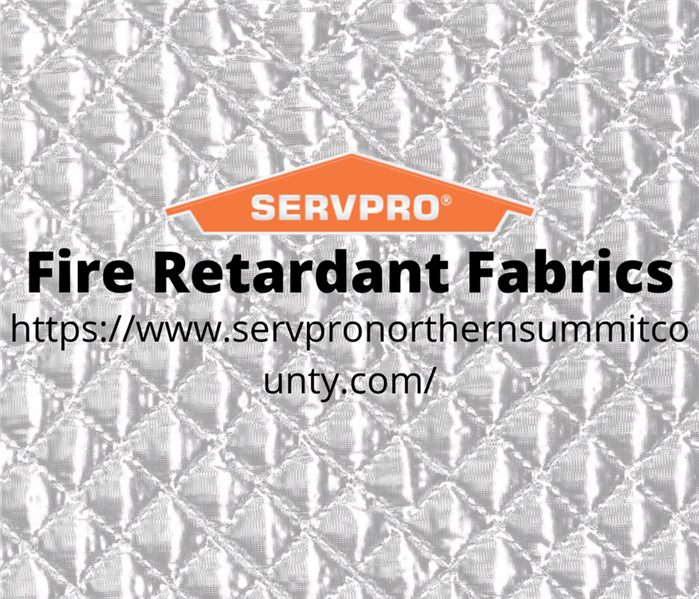Fire Retardant Fabrics
2/5/2021 (Permalink)
FABRICS are all around us, adding warmth, texture, color, and much more to our surroundings, whether curtains, drapes, furniture upholstery, carpets, and even the clothes we wear.
But fabrics can also burn easily and in today’s world we want to protect our homes, businesses, property – and the people we love – from unnecessary risk if the worst does happen and a fire breaks out.
Luckily, there are many types of fabrics out there and each has its own unique properties, many of which are actually surprisingly resistant to fire.
And for those that are more flammable, an increasing range of products exists to improve their abilities to resist fire.
Fabrics are assessed on their fire retardancy based on how long it takes the fabric to burn and at what temperature this takes place. Fabrics are assessed in labs and tested with different types of fire starter such as a gas burner, a smoldering cigarette, or a match, and rated on internationally agreed standards.
Some natural fibers are among the best at being flame-retardant – wool is the hardiest of natural fibers, being particularly hard to catch the light, and often self-extinguishes smaller flames. Silk, perhaps surprisingly, is also a very slow burner and hard to light.
Of man-made fibers, acrylic, polyester, and nylon all have high melting points – higher than many natural fibers – and are considered fire retardant.
For fabrics that are not as naturally retardant, there are two main methods to make them tougher against fire – coating and dipping.
The coating is a method where a fire-retardant back coating is applied to the fabric. This is best for upholstery as it makes the fabric stiffer – good for furniture less so for curtains.
Dipping is when the fabric is given a chemical bath, with the solution filling in space between fibers and making the finished product more resistant to fire – when exposed to heat the chemicals activate and trigger a reaction that suppresses the flame.
SERVPRO of Northern Summit County is your trusted fire safety advisor and here to help with any emergency clean up or restoration.






 24/7 Emergency Service
24/7 Emergency Service
